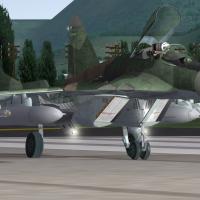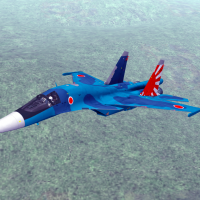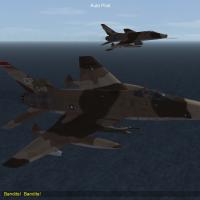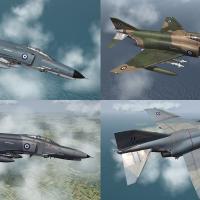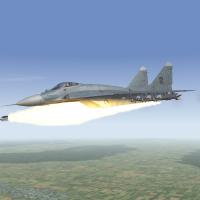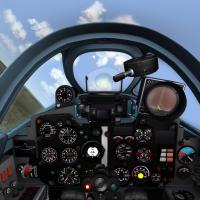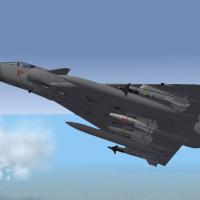-
Content count
384 -
Joined
-
Last visited
Content Type
Profiles
Forums
Calendar
Gallery
Downloads
Store
Everything posted by wazalo68
-
Ludo, great Work! five of five stars, .....Middle east Mirage F-1E Pack Single-seat all-weather multi-role fighter and ground-attack aircraft. Mirage F1ED : Export version of the Mirage F1E for Libya. 16 built. Mirage F1EH : Export version of the Mirage F1E for Morocco. 14 built. Mirage F1EH-200 : Morocco aircraft fitted with a flight refuelling probe. Six built. Mirage F1EJ : Export version of the Mirage F1E for Jordan. 17 built. Mirage F1EQ : Export version of the Mirage F1E for Iraq. 16 built. Mirage F1EQ-2 : Single-seat air defence fighter version for Iraq. 16 built. Mirage F1EQ-4 : Single-seat multi-role fighter, ground-attack, reconnaissance version for Iraq. 28 built. Mirage F1EQ-5 : Single-seat anti-shipping version for Iraq. 20 built. Mirage F1EQ-6 : Single-seat anti-shipping version for Iraq. 30 built. Mirage F1EDA : Export version of the Mirage F1E for Qatar. 12 built. Mirage F1CK : Export version of the Mirage F1C for Kuwait. 18 built and delivered 1976–1977. Later upgraded to CK-2 standard. Mirage F1CK-2 : Nine multi-role aircraft, equivalent to F-1E, were sold to Kuwait as part of a follow up order Mirage F1EQ : Islamic Republic of Iran Air Force seized over 24 F1EQ and F1BQ flown over from Iraq during the 1991 Gulf War
-
French Air Force Mirage F1s were first deployed operationally in 1984 during Operation Manta, the French intervention in Chad, to counter growing Libyan encroachment. Four Mirage F1C-200s provided air cover for a force of four Jaguars, and took part in skirmishes against the pro-Libyan GUNT rebels. In 1986, French Mirage F1s returned to Chad, as part of Operation Epervier, with four F1C-200s providing fighter cover for a strike package of eight Jaguars during the air raid against the Libyan airbase at Ouadi Doum, on 16 February. Two F1CRs also flew pre and post-strike reconnaissance missions. In response the Iraqi invasion of Kuwait, France made two deployments of Mirage F1s to the Gulf, with 12 Mirage F1Cs being deployed to Doha in Qatar in October 1991 to boost air defences, while four Mirage F1CRs of ER 33 deployed to Saudi Arabia as part of Operation Daguet in September 1991. To avoid the risk of being mistaken for Iraqi Mirage F1s, the French F1CRs were grounded during the first few days of the Allied air attacks, flying their first combat mission on 26 January 1991. They were used as fighter bombers, using their more capable navigation systems to lead formations of French Jaguar fighter bombers, as well as to fly reconnaissance missions, flying 114 sorties by the end of hostilities. Following the end of the Gulf war, France deployed Mirage F1CRs to Turkey as part of Operation Provide Comfort to protect Kurds from Iraqi aggression.[9] In November 2004 and in response to an Ivorian air attack on French peacekeepers three Mirage F.1 jets attack Yamoussoukro airport and destroy two Su-25 aircraft and three attack helicopters. In October 2007, three Mirage 2000s and three Mirage F1s were deployed at Kandahar Air Force Base, where they flew close air support and tactical reconnaissance missions in support of international forces in Southern Afghanistan. The last French unit to still be equipped with the Mirage F1, is the Escadron de Reconnaissance 2/33 Savoie, home-based at Mont-de-Marsan, flying the latest version of the F1CR. The unit's primary mission is tactical reconnaissance, with a secondary mission of ground-attack. Because of the unique missions of the 2/33, their unofficial motto among the pilots has become, "Find; Identify; and Photograph or Destroy." In accordance, with a bilateral defense agreement between France and Chad, two, 2/33 F1CRs, along with 3 pilots, a photo interpreter, an intelligence officer and ground crews are always deployed to N'Djamena, Chad. The two 2/33 F1CRs operate with three Mirage 2000Ds, also based on rotation from France to Chad In March 2011, 2/33 Mirage F1CRs were deployed to Solenzara Air Base, Corsica and conducted reconnaissance missions over Libya (also a Mirage F1 operator) as part of Opération Harmattan.[14] In 2013 2/33 F1CRs also participated in Operation Serval in Mali. On 10 January, launching from their base in N'Djamena in Chad, the first French air intervention mission against Islamist rebels in Mali, was undertaken by F1CRs and Mirage 2000Ds, supported by a French Air Force C-135K tanker. The 2/33 F1CRs provided valuable photo information for strike aircraft flying the next day from France. Later on 16 January, two 2/33 F1CRs, were deployed from Chad to Bamako, Mali. Both aircraft were fitted with extra long range 2,200 liter ventral tanks; and when operating over Mali also carried two 250 kg unguided bombs, plus their one internal 30mm cannon, in case they were called on for close air support missions. It is planned that sometimes in the future 2/33s elderly F1CRs will be replaced by Rafales fitted with an advance reconnaissance pod. The Rafale's range, maneuverability and combat load is far superior to the F1CR that it replaces—e.g. after the Rafale's pod has taken photos they can almost instantly be transmitted back to its base or where the photos are needed that has the down link equipment. Mirage F1CMirage F1CE : Export version of the Mirage F1C for Spain, with local designation C.14A. 45 purchased in three batches, delivered between 1975 and 1981. Mirage F1CG : Export version of the Mirage F1C for Greece. 40 built, which were delivered between 1975 and 1978 Mirage F1CH : Export version of the Mirage F1C for Morocco. 30 built, delivered 1978–1979 Mirage F1CJ : Export version of the Mirage F1C for Jordan. 17 built Mirage F1CK : Export version of the Mirage F1C for Kuwait. 18 built and delivered 1976–1977. Later upgraded to CK-2 standard Mirage F1CK-2 : Nine multi-role aircraft, equivalent to F-1E, were sold to Kuwait as part of a follow up order Mirage F1CZ : Export version of the Mirage F1C for South Africa. 16 delivered 1974–1975, with two further aircraft received to replace aircraft lost in a February 1979 collision Mirage F1E Single-seat all-weather multi-role fighter and ground-attack aircraft. Mirage F1JA : Export version of the Mirage F1E for Ecuador. 16 built. Mirage F1ED : Export version of the Mirage F1E for Libya. 16 built. Mirage F1EE : Export version of the Mirage F1E for Spain. 22 built. Mirage F1EH : Export version of the Mirage F1E for Morocco. 14 built. Mirage F1EH-200 : Morocco aircraft fitted with a flight refuelling probe. Six built. Mirage F1EJ : Export version of the Mirage F1E for Jordan. 17 built. Mirage F1EQ : Export version of the Mirage F1E for Iraq. 16 built. Mirage F1EQ-2 : Single-seat air defence fighter version for Iraq. 16 built. Mirage F1EQ-4 : Single-seat multi-role fighter, ground-attack, reconnaissance version for Iraq. 28 built. Mirage F1EQ-5 : Single-seat anti-shipping version for Iraq. 20 built. Mirage F1EQ-6 : Single-seat anti-shipping version for Iraq. 30 built. Mirage F1EDA : Export version of the Mirage F1E for Qatar. 12 built.
-
-
-
-
-
-
-
-
-
-
-

[What-if] Lockheed Martin F/A-16E Silver Falcon
wazalo68 commented on DoctorWho's file in What If Hangar
-
-
-
-

Wild Weasel Lightnings
wazalo68 replied to Spinners's topic in Thirdwire: Strike Fighters 2 Series - Sci-Fi/Anime/What If Forum
where are the cockpits of Lightning's -
-

Calling Spinners, French Phantom?
wazalo68 replied to Stratos's topic in Thirdwire: Strike Fighters 2 Series - Sci-Fi/Anime/What If Forum
WHERE? COCKPIT LIGHTNING




